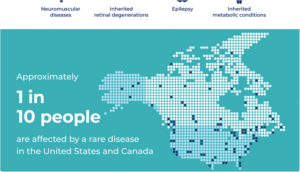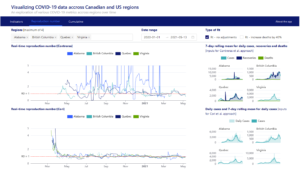
Sunday is Rare Disease Day! The last day of every February is dedicated to raising awareness among the general public and decision-makers about rare diseases, and their impact on patients’ lives. This is a cause near and dear to our hearts here at Broadstreet. Rare disease research accounts for a significant amount of the work we do; over 150 of our projects in the past 5 years have centered around rare diseases. Because of that, today we thought we’d focus on some of the unique challenges and new frontiers found in rare disease research.
The term rare disease can be confusing because people often have the perception that if they have heard of a condition, it can’t be rare. But, worldwide around 400,000,000 people suffer from a rare diseases, and these conditions touch the lives of people all around us. While the definition of rare disease varies from country to country, generally a condition is considered rare if it affects fewer than 1 in 2,000 people. Examples of relatively frequent and well-known rare diseases include hemophilia and Hodgkin lymphoma.
Over 7,000 rare diseases have been identified
To date, over 7,000 rare diseases have been identified. Approximately 80% of those have a genetic basis and more than 50% of patients with rare diseases are children. Having a rare disease can be isolating for patients and their families; often patients don’t know anyone else in their community with the same condition. Information about the disease can be very limited and there may be no treatment. In addition, getting a diagnosis can be a long and frustrating process, which can be detrimental in cases where early treatment can bring benefits to the patient.Defining rare diseases
- The US: A rare disease as in one affecting less than 200,000 people.
- European Union: A condition affecting less than 250,000 people.
- Japan: A condition affecting less than 50,000 people.
- Canada: A condition affecting 1/2,000 people.
Rare disease versus orphan disease
In many places the terms rare disease and orphan disease are used interchangeably. In the US, an orphan disease is any disease (so not just a rare disease) where the cost of making a drug to treat the condition would be difficult or impossible to recover through the sale of the drug.
Researching rare diseases poses considerable challenges
Part of the reason diagnosis and treatment of rare diseases are so complex is because these conditions present a number of unique challenges for research. Because of the lack of information about disease progression, researchers and clinicians don’t have a very good understanding of how the condition can be expected to affect a patient during different points of their life. Additionally, rare diseases pose complex issues around how research studies are conducted both in terms of methodology, ethics, and even funding. Briefly, those issues include:- How to conduct rigorous studies when, because of disease rarity, it is difficult to recruit enough similar participants to meet accepted sample size criteria (eg. groups of the same age, point in disease progression, genotype, etc.).
- How to compare results across studies when there is often a lack of standardized measures tailored to the symptoms of that particular rare disease. This lack of comparability can make it difficult to understand the relative efficacy and safety of one treatment verses another.
- Is it ethical to conduct trials with untreated control populations thus denying some patients a potentially life-saving treatment? This is particularly a concern for progressive conditions where early treatment may result in the most benefit.
- How do we fund research in rare diseases in light of economic challenges such as limited drug budgets and the difficulty in recouping the high costs of research and development from a small pool of eligible patients.


